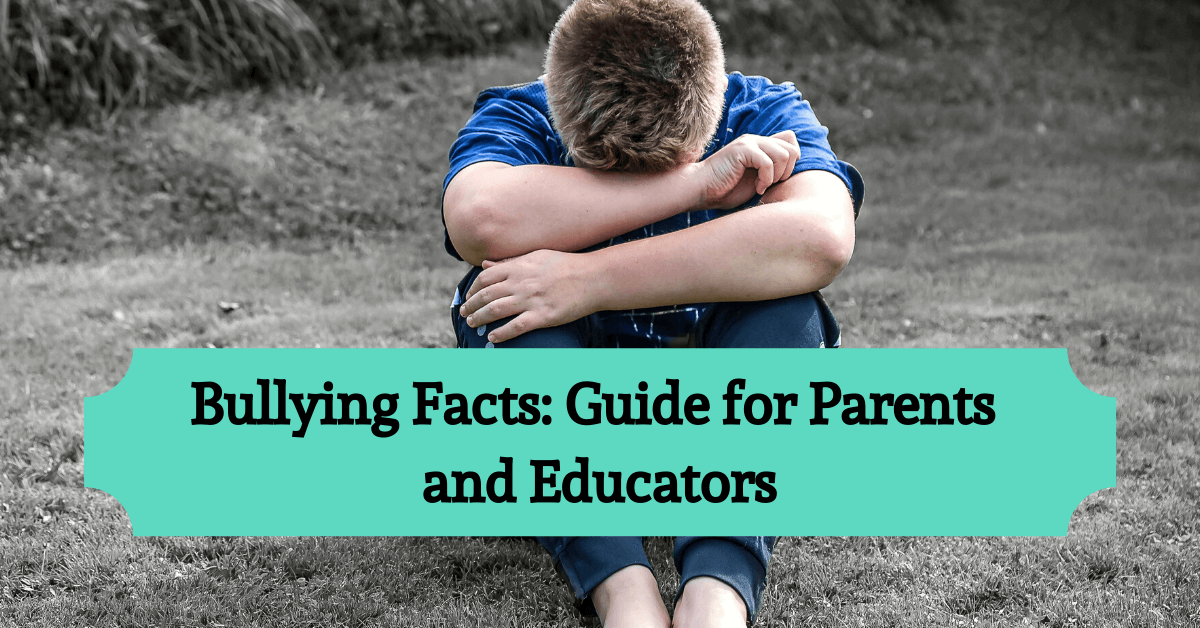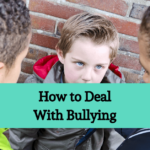Introduction
Children of all ages face the issue of bullying, whether at school and, more recently, on the internet. With cyberbullying becoming a growing trend, especially with teenagers, studies found that 81% of the students they interviewed considered it the easiest form of bullying. Arming yourself with the best information will aid in helping your child and your family if bullying ever becomes an issue.
Table of Content:
This article is part of The Anti Bullying Guide article series
Chapter 1: How to Identify a Bully: The Ultimate Guide
Chapter 2: Bullying Facts: Guide for Parents and Educators (You are here)
Chapter 3: Examples of Bullying
Chapter 4: Why do Kids Bully?
Chapter 5: How To Deal with Bullying
Chapter 6: How To Stop Bullying
Chapter 7: Effects of Bullying and Cyber Bullying
Chapter 8: Stop Bullying Websites: Online Resource List
Bullying Facts
It is natural for children of all ages to face adversity while growing up. Assess the situation and decide if the other child is being intentionally hurtful and if he or she is repeatedly causing the harm. If your answer is no, then you may need to meet with the other child’s parents and talk as a group. However, if the answer is yes, and the disputes become embarrassing for your child or even threatening, then it crosses the line into bullying. The stress a child and their family face may lead to lasting effects. Research finds that students in the 6th grade face the most toxic environment for bullying.
Talk to your child. Depending on their age, they may not realize that they have a bully. Young adults need to be aware that spreading rumors, posting fake profiles, sending threatening texts, damage to property, or being mean in person does matter. Whether it is physical, verbal, cyber, and even relational – all bullying methods do count.
Cyberbullying Facts
Using technology to intentionally harm someone is a grown trend as 1 in 5 teens have encountered online bullying at least once. With a never-ending list of social media apps and texting, an estimated 70% of students reported seeing bullying often online – especially among girls. Some cyberbullying includes sending mean spirited emails, texts, or direct messages. Bullies may post hurtful things on social media or start untrue rumors about your child through online chatting. There are even times when bullies threaten others using social media accounts.
Catfishing
If you haven’t heard of the term before, catfishing online has grown amongst cyberbullies. This technique occurs when children and adults pretend to be someone they are not using fake social media accounts to pursue a deceptive online romance. This harmful act can dupe a person into believing another boy or girl cares for them when in reality it’s a cruel trick. Misleading someone is not new, but it is a hurtful act of fooling a person into believing that another person cares for them.
Bullying Characteristics
A common theme among the children interview is that a majority of the victims felt that their bully influenced their friends and social standing. Students that show either physical or learning disabilities are more likely to be intimidated by their classmates. Being seen as “different” from others can cause low self-esteem. Additionally, it may be difficult for your child to make and keep friends, and becoming a target is due to a lack of social skills.
Bullying Resources
If you find that your child has been bullied or cyberbullied, you are not alone. There are resources to help you, your child, and your family, such as StopBullying.gov. This federal agency can provide the assistance you need when times are tough.
Talk To the Bully
First, try to talk with the parents of the bully. They may not realize the pain their child is causing and how it is affecting your child. If you feel that talking to the parents is not an option, then consider involving the school by contacting the guidance counselor or principal. Each school should have an anti-cyberbullying policy and can offer resources to help.
If the bullying escalates to continuous threats or physical harm to your child, then consider contacting the authorities. Save any evidence, including screenshots from your phone, or print out your emails as a backup in case you need them.
Getting Help
As students age, the less likely they are to ask for help. However, there are some key indicators to let you know if your child is a victim. Typically, only 1 in 10 victims will even mention abuse conducted by their peers. Depending on your child’s social standing among their peer group, they may put up with the bullying just to have attention from their classmates rather than to have none at all.
Bullying can cause physical and emotional damage to students for both the short and long-term. There is an increased risk for depression and anxiety, and some signs of being on the lookout for are:
- Withdraws more from social and family activities than normal
- Passively indicates increased drama at school, lack of friends or feeling lonely
- Your child does not want to use a computer in your presence or stops using their laptop or devices altogether
- A change in attitude or behavior when your child receives a text, direct message, or instant message
- Apprehensive about attending school or refuses to attend classes all together
You may find that even if your child does recognize that their so-called friend is a bully, they may decide to work the issues out themselves. Or, they are worried about retribution if they complain and wonder if the bullying will get worse.
Bullying Is Not Illegal
It is essential to take every case of bullying seriously. These issues can escalate into criminal acts from hazing to harassment and even end with the victim’s suicide. At the time of this post, there are no federal anti-bullying laws, but 49 states do have bullying legislation.
Communicate
There are steps to take as a parent or caregiver to prevent your child from being bullied or cyberbullied – especially if you think they might be a victim. Please educate yourself on the facts about bullying and its damaging effects on children and teens. Take the time to break down barriers between your children and their peers and start having difficult discussions at home several times throughout the school year.
Be A Resource
Anyone can become a victim. Your child will need you for support and a sounding board to hear to their side of the story. Being present for your child as a resource can help them feel a sense of power and love in what otherwise is a powerless situation.
Technology is terrific to have at our fingertips. It is essential for your child to learn about the responsibility of having these devices – especially at such an early age. Instruct your child about the maturity needed to have these accounts along with the warning signs of a bully. The time you spend together will equip them with the best information to guide them in future situations.
Table of Content:
This article is part of The Anti Bullying Guide article series
Chapter 1: How to Identify a Bully: The Ultimate Guide
Chapter 2: Bullying Facts: Guide for Parents and Educators (You are here)
Chapter 3: Examples of Bullying
Chapter 4: Why do Kids Bully?
Chapter 5: How To Deal with Bullying
Chapter 6: How To Stop Bullying
Chapter 7: Effects of Bullying and Cyber Bullying
Chapter 8: Stop Bullying Websites: Online Resource List












0 Comments